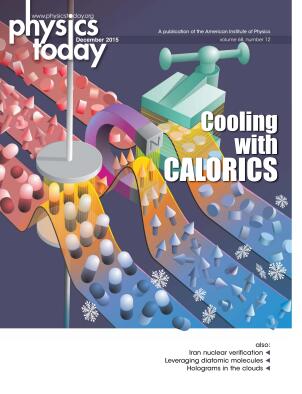Hair ice
DOI: 10.1063/PT.3.3034
Found on the exterior of moist, decaying wood from broad-leaved trees, hair ice closely resembles its eponym, with fine, silky filaments in structures containing curls, waves, and part lines. It grows outward from the wood surface in calm, humid conditions at air temperatures slightly below 0 °C. From his observations of hair ice nearly a century ago, Alfred Wegener—better known as the founder of the theory of continental drift—postulated that its formation was related to fungi on the wood surface.

Earlier this year a German–Swiss team comprising a chemist, a secondary school biologist, and a retired physicist confirmed Wegener’s suspicion. In particular, the researchers attribute hair-ice formation to the winter-active fungus Exidiopsis effusa—they found it on all their wood “scalps,” where it was often the sole fungus present. Although ordinary frost and hair ice form under similar weather conditions, hair ice derives from water originating within the wood: Interfacial effects inside the wood’s channels and pores keep the water flowing until it joins the growing ice strands at the surface. Fungal activity shapes those strands and prevents them from recrystallizing. Chemical analysis of melted hair ice revealed signatures of organic scraps—remaining wood fragments—characteristic of the feasting fungi. And when the researchers treated the wood with fungicides or scalding water, hair-ice formation was suppressed. (D. Hofmann, G. Preuss, C. Mätzler, Biogeosciences 12, 4261, 2015, doi:10.5194/bg-12-4261-2015
To submit candidate images for Back Scatter, visit http://contact.physicstoday.org
